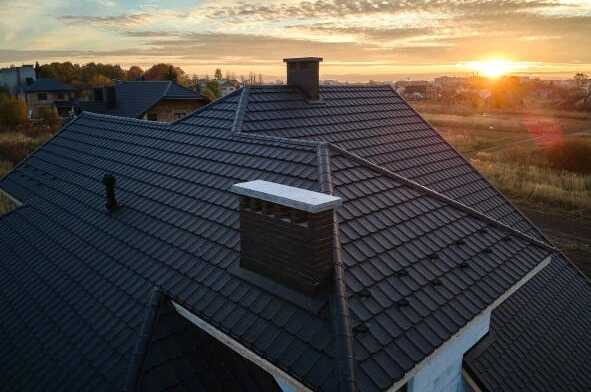When people think about indoor air quality, they usually focus on HVAC systems, air purifiers, or even household cleaning products. Rarely does the roof come to mind. But the truth is, your roof plays a major role in determining the air you and your family breathe every day. A roof that’s leaking, poorly ventilated, or in disrepair doesn’t just damage your home structurally—it directly affects comfort, health, and safety inside.

How Roof Leaks Impact Air Quality
The most obvious way a failing roof compromises air quality is through leaks. Even a small drip can introduce moisture into walls, insulation, and ceilings. Once moisture settles, mold and mildew thrive.
Mold spores spread quickly through the air, often causing:
- Allergic reactions like sneezing, coughing, or itchy eyes.
- Aggravated asthma symptoms.
- Long-term respiratory issues in sensitive individuals.
Many homeowners don’t realize that the musty smell in their basement or attic often traces back to a roof leak. By the time stains appear indoors, the damage has already been spreading for months.
Ventilation: The Unsung Hero of Clean Air
A well-ventilated roof keeps air moving through your attic. This circulation prevents hot, humid air from building up in summer and damp, stagnant conditions in winter. Without proper ventilation, moisture lingers, insulation becomes damp, and indoor humidity rises.
High humidity creates a breeding ground for dust mites and mold—two major culprits of poor indoor air quality. In extreme cases, a poorly ventilated roof can even damage rafters and decking, leading to expensive structural repairs in addition to health problems.
Energy Efficiency and Comfort
A healthy roof doesn’t just block water—it helps regulate indoor comfort. When shingles, underlayment, and ventilation work together, they keep temperatures stable. Without this balance, your HVAC system works overtime, often recirculating dust, allergens, and pollutants more quickly.
This cycle not only drives up energy bills but also affects how “clean” your indoor air feels. Roof upgrades can reduce strain on HVAC systems, helping them filter air more effectively.
Windows, Doors, and the Bigger Picture
Air quality isn’t influenced by the roof alone. It’s part of a larger envelope that includes siding, insulation, windows, and doors. If you upgrade your roof but keep drafty windows or leaky doors, moisture and pollutants can still enter the home.
Pairing roof improvements with windows and doors replacement NY strengthens your home’s defenses. Together, these upgrades seal out moisture, reduce drafts, and ensure your ventilation system can do its job properly. The result is cleaner, fresher indoor air across every room.
Signs Your Roof Is Hurting Your Air Quality
You may not see roof damage immediately, but your body often notices first. Pay attention to these warning signs:
- Increased allergy symptoms indoors.
- Persistent musty smells, especially in the attic or upstairs rooms.
- Higher-than-usual humidity inside the house.
- Condensation forming on windows during colder months.
- Rising energy bills despite normal HVAC use.
Each of these issues may point to roof-related problems affecting your indoor environment.
Preventing Roof-Related Air Quality Issues
The best defense is proactive care. Homeowners can protect air quality by:
- Scheduling annual roof inspections.
- Keeping gutters clear to prevent water backup.
- Replacing damaged shingles immediately.
- Ensuring attic vents are not blocked by insulation.
- Addressing leaks at the first sign of water intrusion.
Combined with routine HVAC maintenance, these practices dramatically reduce the chances of air quality problems linked to roofing.
A Healthier Home Starts at the Top
Your roof isn’t just about shingles and flashing—it’s a system that directly influences your living environment. By maintaining it properly and pairing it with window and door upgrades, you can improve both comfort and health inside your home. The link between roofing and indoor air quality may be hidden, but once you recognize it, the path to cleaner air and a healthier home becomes clear.
